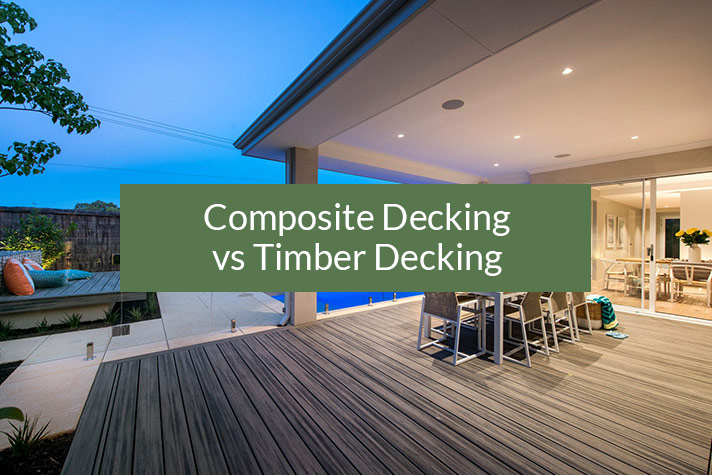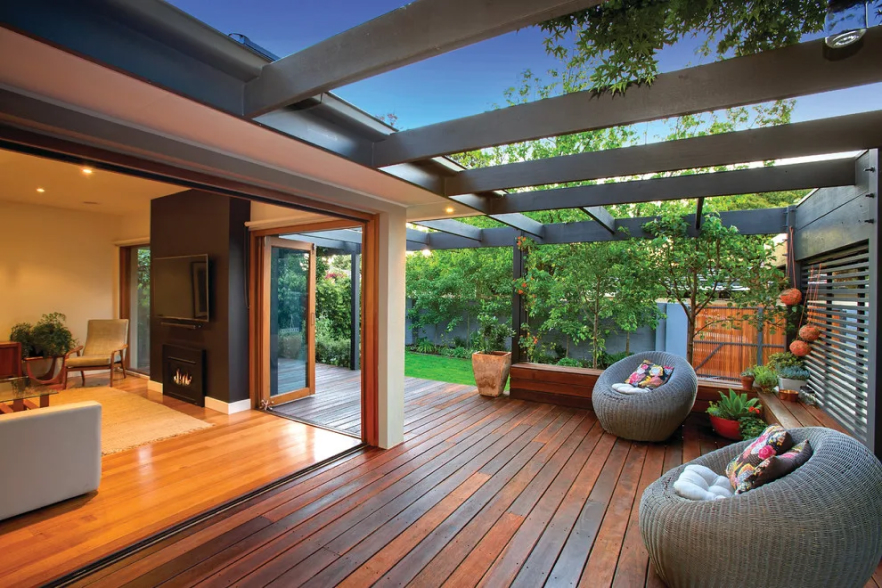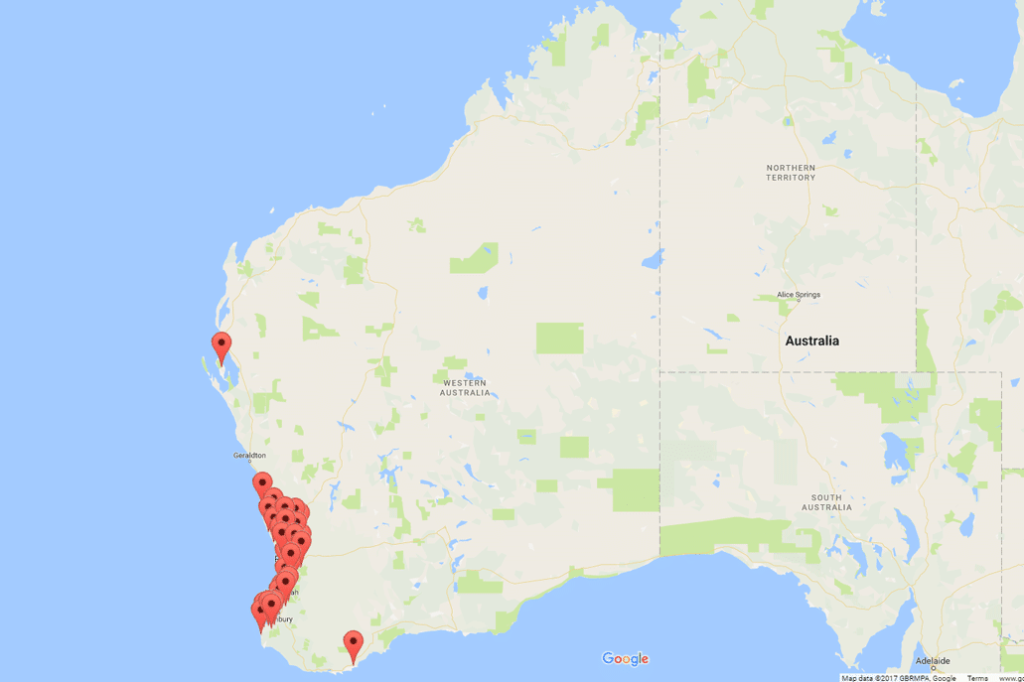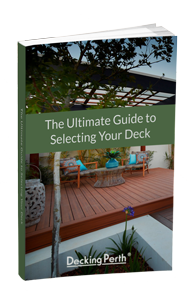When it comes to selecting the type of material to use for your decking, there are two options, composite decking and timber decking. Both products form a natural flow from the indoors to outdoors and boast benefits through the features they include.
Composite Decking
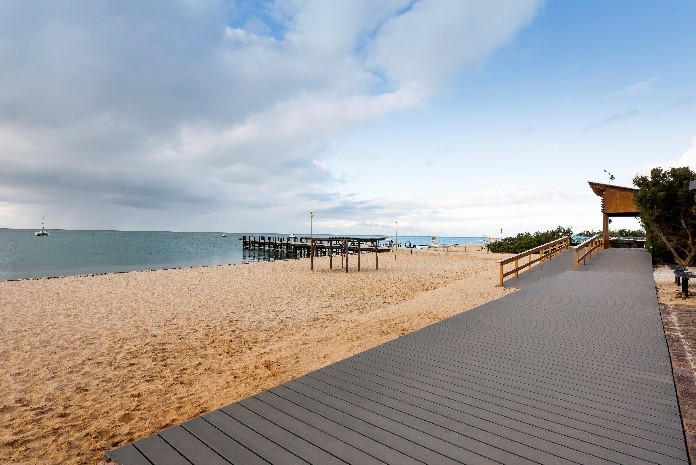
Composite Decking is a man made, eco-friendly timber/plastic product. Made up of 95% recycled wood fibres and recycled plastic, the composite material has unique characteristics.
Features
Composite timber is one of the most durable decking products on the market. Using a hidden fastener system to install, it makes use of grooves built into the side of the decking planks for a smooth top surface.
The surface is resistant to fading, staining, scratching and mould as it is capped, requiring only semi-annual cleaning with a hose and general household cleaner. It is aesthetically pleasing to the eye with a consistent grain colour throughout.
Trex Contour is the answer to your composite decking durability and quality concerns but at an affordable price. This type of composite decking gives you a sophisticated look through natural wood grain patterns without the hassle of splinters. Available in a range colours such as coastal greys, light and dark browns and it’s highly suitable for:
- Schools
- Resorts
- Residential areas
- Councils
- Open Public Spaces
Trex Transcend is a high-performance composite decking product with unparalleled beauty. The decking is available in a premium five- colour scheme, having both wood-grain patterns and tropical hardwood finishes, creating a timeless and superb look for your home.
Trex Transcend allows flexibility in your design as you can match your decking to elements like your wall cladding and lighting. Available in the following colours:
- Tiki torch
- Lava Rock
- Spiced Rum
- Island Mist
- Havana Gold
When it comes to deciding which composite decking product is right for you, this is entirely dependent on your needs, wants and budget.
Benefits
- Eco-friendly
- Mimics grains and colours of timber
- Easy to install
- Low maintenance
- Resistant to Mould & Insects
- No rotting boards to replace
- No wood splinters, twisters, cupping or wood splits
- Stain and weather resistant
- Regular standardised board length
- Anti-slip properties
Disadvantages
Composite decking products requires more of an initial investment compared to timber decking. But, although it may seem significantly more, the value of the product is worthwhile due to its longevity.
Timber Decking
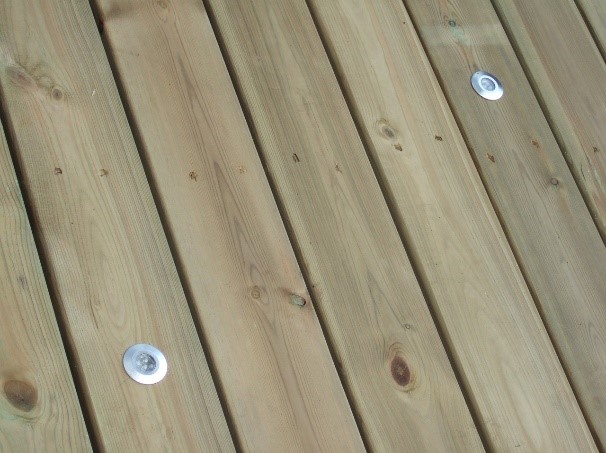
Timber Decking is the original building material coming in both hardwood and softwood. All outdoor timber decking requires maintenance and care to ensure a long-lasting look. We feature a range of natural timber products, including…
Features
Timber decking comes in a variety of species that are highly resilient and durable. The wood has a sleek natural look that can be modified to complement an outdoor colour scheme. It is easy to stain or can simply be left raw for a more natural, weathered appearance.
The surface can tend to fade and change in the climate, so regular maintenance is necessary. This will include resealing and resurfacing throughout the life of the product.
Benefits
- Natural look through the unique and varied appearance of each wooden board
- Strong and durable
- Easy to install
- Doesn’t require staining for an appearance
- Less likely to sustain marks and scratches
- Each hardwood has natural benefits
- Versatile
- Easy to work with
- Initially cheaper than composite timber
Disadvantages
Timber is prone to weathering easily, so regular upkeep and maintenance is required.
The decision is yours
When it comes to picking the most suitable material for your decking, this decision is entirely up to you. Both composite and timber decking will provide you with a durable and versatile space that will require some maintenance and upkeep efforts, some more than others.
Both materials can provide you with a stunning outdoor area, so now it is up to you to set your budget and start visioning your decking dream.
